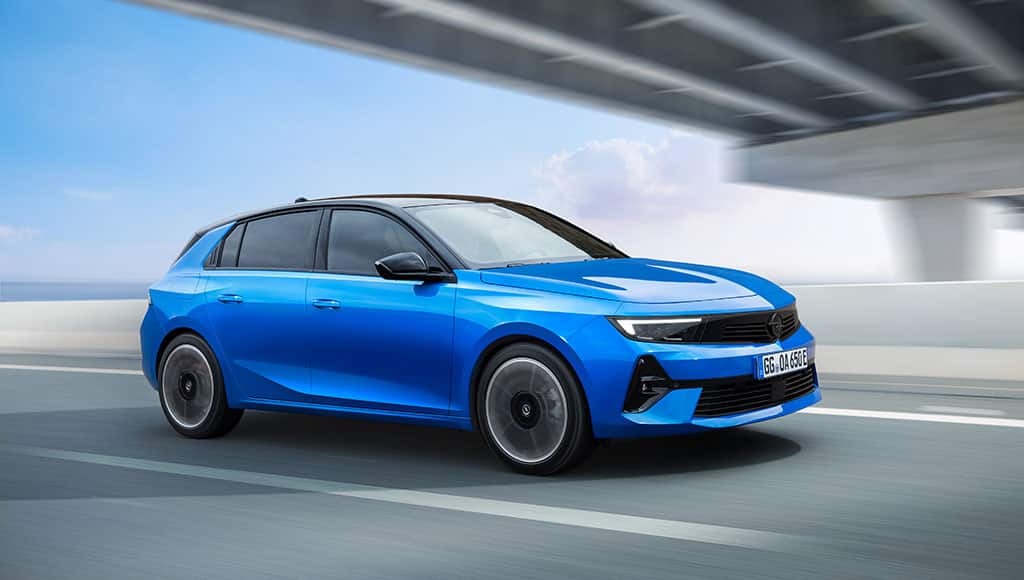The battery-powered Opel Astra feels a lot like the petrol-powered Opel Astra. Only smoother and quieter. It’s a good one.
I drove the electric Astra around for a few days. I enjoyed it. I felt it was pretty ‘normal’. That made me go look for the text on the petrol Astra I wrote in December 2022. I couldn’t help but smile.
I was wondering what I must have written because the battery-powered Opel was feeling a lot like the one with a combustion engine. This is some of what I said about the 1.2 petrol-engined Astra at the time: “Driving dynamics are very polished, the Astra’s chassis very easy to read and predictable. Comfortable too, although it is set up on the firmer side of its French cousins, as it should be with an Opel. The car feels nimble and adjustable, also because the steering is very light.”
Curious, because I could write that word for word on my feelings on the electric Astra. And that matters because it shows the approach the Stellantis Group is taking with their whole catalogue of cars, be it electric or fuel powered. They have a distinctive feeling, irrespective of their propulsion system, which is quite the achievement from the German/French team of engineers.

I am not sure if you think this is easy but let me tell you: it’s the opposite of easy. Although the look of the car is the same from the outside and the interior is almost unchanged, to get two cars that are so different on their mechanical side to feel so alike behind the wheel is no mean feat.
Under the floor of the car lays a battery of 54kWh gross, with 51.5kWh of them actually useable. It can accept up to 100kW DC fast charging, meaning 10% to 80% in half an hour is possible. Small batteries do have their perks and fast charging is one of them. The other is lightness (or less heaviness to be more precise).
The H-shaped battery pack is placed under the seats and all along the ‘transmission tunnel’, although in an electric car that does not mean the same as it does in a car with a regular gearbox. The placement of the battery does two important things: first, it adds torsional rigidity to the chassis; second, it lowers the centre of gravity of the vehicle, which gives better handling characteristics. It does steal some space in the boot, but the Astra still offers 350 litres of capacity.
Opel says maximum range is 413km, which may not be the best in the market, but the Astra is not trying to beat any kind of records. In fact, I think Opel really wants the electric Astra to be as normal and as useable as the petrol car I drove. It’s not supposed to be the ultimate anything, quite the contrary actually: this is a car for the mundane, everyday stuff – and it does that really rather well.
Obviously, when the time comes for recharging, it takes quite a bit longer than just filling up with liquid fuel, but if you are considering an electric car, you already know this.

Apart from that, the Astra-e is a really good companion. It’s super quiet and relaxing to drive and there are absolutely zero spaceship-like sounds or fake engine noises to turn off on the infotainment. Opel opted for silence and that was a very good decision. They had to take care of a few things to improve isolation though and they did it well: noise-reducing double-glazed glass as standard and new door and boot seals. Good engineering never hurt anyone.
The ride is not as cushy as in the similar Peugeot, but the damping is very good and gives the Astra an extra bit of flair in the corners, which I liked. Because there is only 156 horsepower to play with, the electric motor never makes the front-wheel drive chassis lose its composure and the Astra is quite fluid and agile.
The cabin is a nice place to be and fairly straightforward. Apart from a few specific menus needed on an electric car, everything is exactly the same as in any other Astra. Standing at the front of the driver, there is a 10-inch digital instrument cluster for the driving elements, whereas another 10-inch screen, this one with touch-sensitive functions, houses the infotainment.
In some more good news, there are proper physical buttons on the steering wheel and a whole cluster of them for the climate controls and shortcuts on the dashboard. Not everyone lost their common sense apparently – a button is still the best way to activate most electronic functions in a car.
The Astra is a reflection of a brand on the up. Sales grew by 15% overall last year, 4.1% in Europe. In Portugal, Opel sold 23% more cars in 2023 than it did in 2022. And, at €40,620, this is a very competitively priced c-segment electric vehicle. It looks good, it drives well and it’s very comfortable. A very worthy option for all the eco-conscious out there.





















